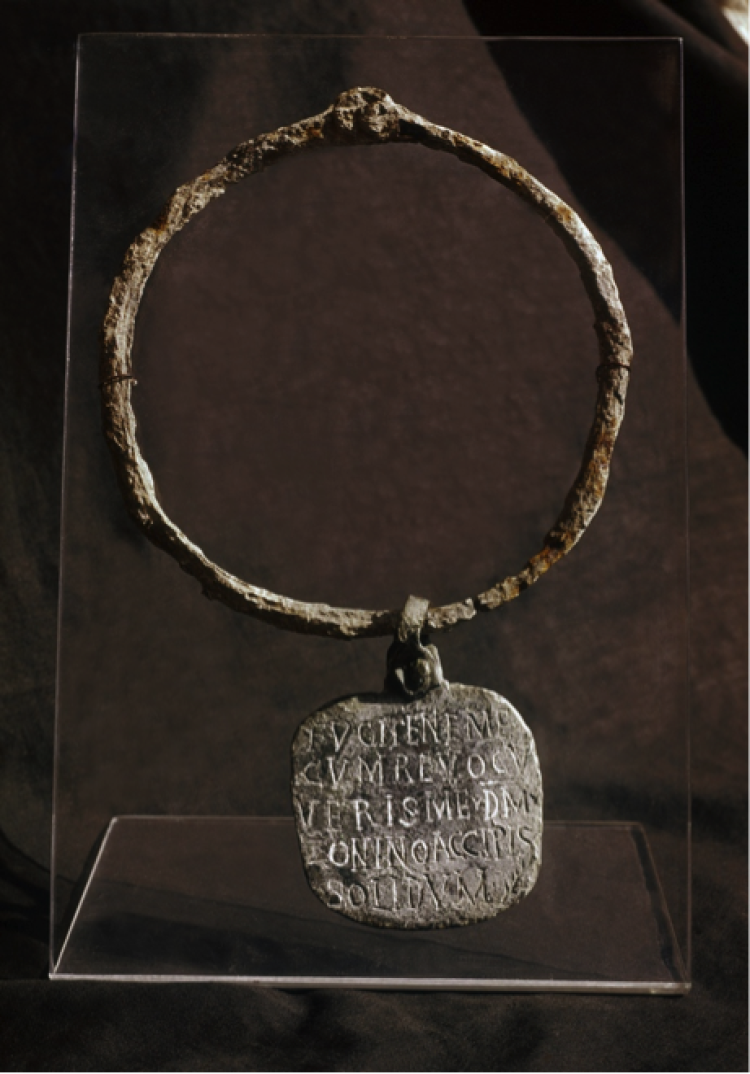Greek and Roman Slavery in Spring 2019
Professor Peter Hunt
Clas/Hist 4071 Ancient Social History:
Ancient Greek and Roman Slavery
Clare 208; TR 9:30-10:45

Topics include enslavement, the economics and politics of slavery, slaves' sex and family lives, manumission and ex-slaves, everyday resistance, gladiators and the great slave revolts, and the decline and legacy of ancient slavery. We'll also explore slavery's role in classical culture including literary representations of slaves and philosophical and legal responses to slavery.
Almost forty metal Roman slave collars have been found. Their inscriptions often included, “I am a runaway. Seize me,” identified the master, and promised a reward for the return of the slave. All date to the late Roman empire and a number suggest Christian slaveholders. One plausible explanation for the late dates is that Christians considered it blasphemous to disfigure a person’s face with a brand or tattoo, previously a common punishment and way to discourage slaves from running away. When this practice was outlawed under Constantine (Theodosian Code 9.40.2), good Christian slaveholders substituted slave collars, which, unlike tattoos, can survive to be found by archaeologists.

